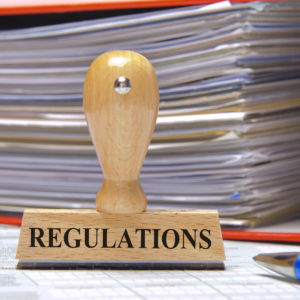President Donald Trump has embarked on an ambitious journey to rollback federal regulations. But the impact of that effort may be overblown by both supporters and critics.
Trump and his administration have undoubtedly done a lot to advance that regulatory agenda. Federal agencies over the last year have worked to roll back regulations – while the president has taken executive actions to upend other federal rules. The intended goal is to boost economic growth by reducing burdens that employers face.
The American Action Forum (AAF) found Oct. 3 that the administration has saved $560 million annually by cutting regulations. But that represents only a portion of possible savings through regulatory cuts. The administration is still working to scrap or rewrite a long list of other regulations.
“I think the accomplishments to date are probably not as significant as either side says,” Brookings Institution senior fellow Philip Wallach told InsideSources. “But they may be well on their way to making the changes that will be pretty significant. The regulatory process is slow and cumbersome by design.”
Wallach adds that there has been a fairly modest easing of the regulatory compliance burdens for some industries. He notes the full impact of those actions will likely not be felt straightaway – like when it comes to the environment. So even when a regulation is implemented or undone, the implications might not be felt for many years.
Both supporters and critics may have an incentive to exaggerate the deregulatory effort because it supports their side of the issue. Republicans can claim they are doing a lot to help businesses and workers while Democrats can argue about how much they have undermined worker rights and environmental protections.
“I would say there hasn’t been as much deregulation as the administration has portrayed,” AAF regulatory policy director Dan Bosch told InsideSources. “But to the same token, not a lot has changed in terms of, we haven’t seen the sky falling from a public health and environmental safety perspective. So I think both sides are over-characterizing it. But the process has certainly been noticeable, especially in D.C.”
Federal regulations often require a lengthy process that involves a public comment period to either implement or undo. The process could take a year or more depending on the regulation. That means it could take years for the administration to roll back many of the regulations it is hoping to.
“The regulatory process usually takes a year or two once they make a proposal,” Bosch said. “That’s something you’d expect to see, the deregulatory actions, next year. The Clean Power Plan will likely be revealed next year. The Waters of the United States rule, the overtime rule.”
Federal regulations aren’t the only rules and restrictions that the administration has worked to upend. The process to reverse a federal rule tends to be as easy or difficult as it is to implement. Former President Barack Obama implemented much of his agenda through executive actions – making it fairly easy to scrap.
“I think the impact so far has been mostly chipping away a lot of regulations from the Obama administration while they work them through the regulatory process to change them,” Bosch said. “So we haven’t seen a lot of substantive changes to regulations per se.”
Republicans and the business community have long argued regulations have become overly cumbersome. The administration has focused on labor policy, consumer rights, healthcare, and the environment in its deregulatory push. The administration is optimistic the approach will help lift the burden on employers – with the hopes they’ll invest more time and money back into their businesses and employees.
The administration is also facing legal challenges over its push to deregulate. Lawsuits have the potential to make the process to implement or remove regulations significantly longer. A court could delay a regulatory change to give time for a proper ruling or it could rule against it outright.

